

Damion Smy
Boxy new KGM Musso unveiled to take on HiLux and Ranger ahead of Australian launch
7 Hours Ago
The EQB 350 loses the nameplate's key selling point – the option of a third row. Does its dual-motor drivetrain make up for it?
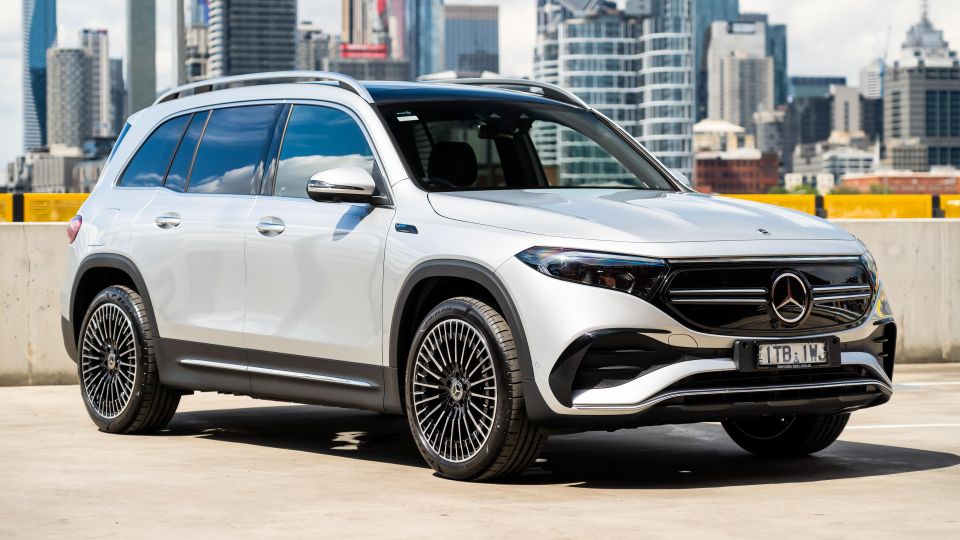
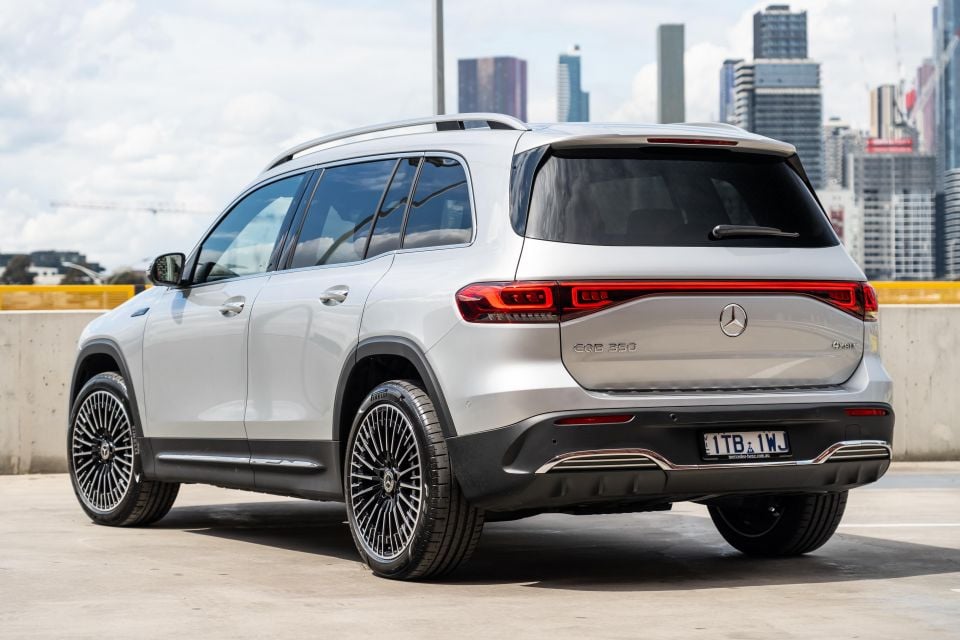

Quickly see how this car stacks up against its competition. Select any benchmark to see more details.
Where expert car reviews meet expert car buying – CarExpert gives you trusted advice, personalised service and real savings on your next new car.
The Mercedes-Benz EQB remains the only seven-seat electric SUV at the time of writing… well, if you option a third row on the entry-level 250 variant…

Later this year the Kia EV9 will become the second name on that list, but even when that happens your options are still very limited.
But within the EQB range options are also limited – because if you go for the 350 4Matic tested here, you’re unable to option a third row of seating in Australia, despite it being available overseas.
Why? Australian rules around rear axle load limits prohibit the German marque from fitting the heavier EQB 350 with sixth and seventh seats.
So then, what’s the point of the 2023 Mercedes-Benz EQB 350 4Matic?
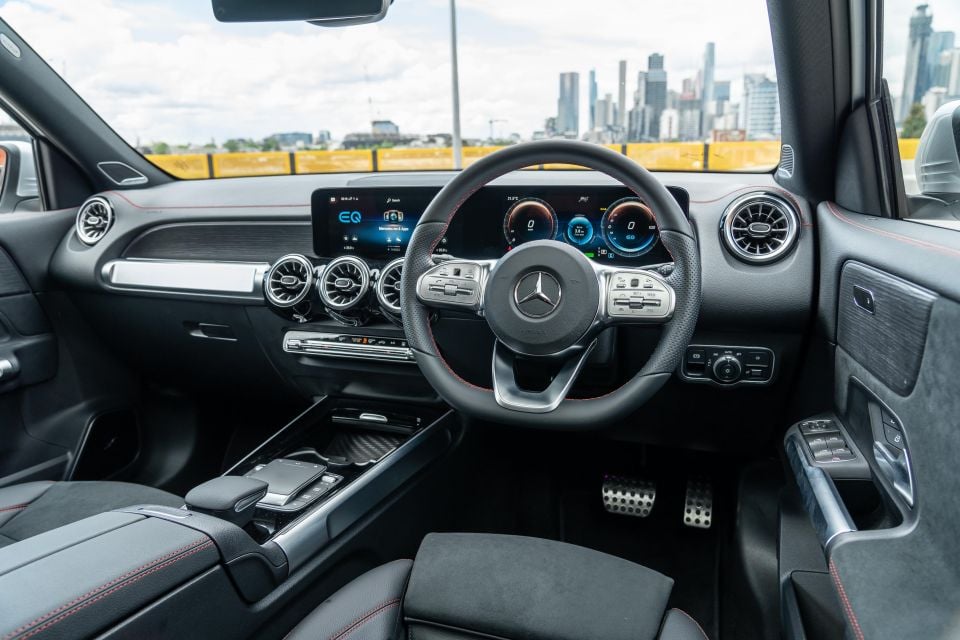
Well, if you want a Mercedes-Benz EV and the EQA doesn’t have enough space, the five-seat EQB 350 4Matic offers much of the same interior design and drive experience but with a bigger, boxier body that will better fit people and their stuff.
Being a Benz it’s also meant to be a little fancy, and at over $100,000 as tested it costs a pretty penny too. Does it make a case for itself in an ever-competitive market?
Prices are up slightly as of mid-2023, with the EQB 350 4Matic priced from $107,480 before on-road costs – an increase of $780.

That’s about $19,000 dearer than the single-motor EQB 250 that’s pretty much the same car with less power, and also offers the option of three rows of seating.
Even at the 350’s price point you still have to option things like a head-up display and the MBUX High package with augmented reality (AR) navigation, as well as electrically-operated front seats with memory – really Mercedes?!
Rivals include the BMW iX3 ($104,900) and the Tesla Model Y Performance ($98,415). You could also throw in flagship mainstream EVs like the Hyundai Ioniq 5 Epiq AWD ($84,981) and Kia EV6 GT ($99,590).
Other than the BMW, all of the other listed options offer more performance and range than the EQB.
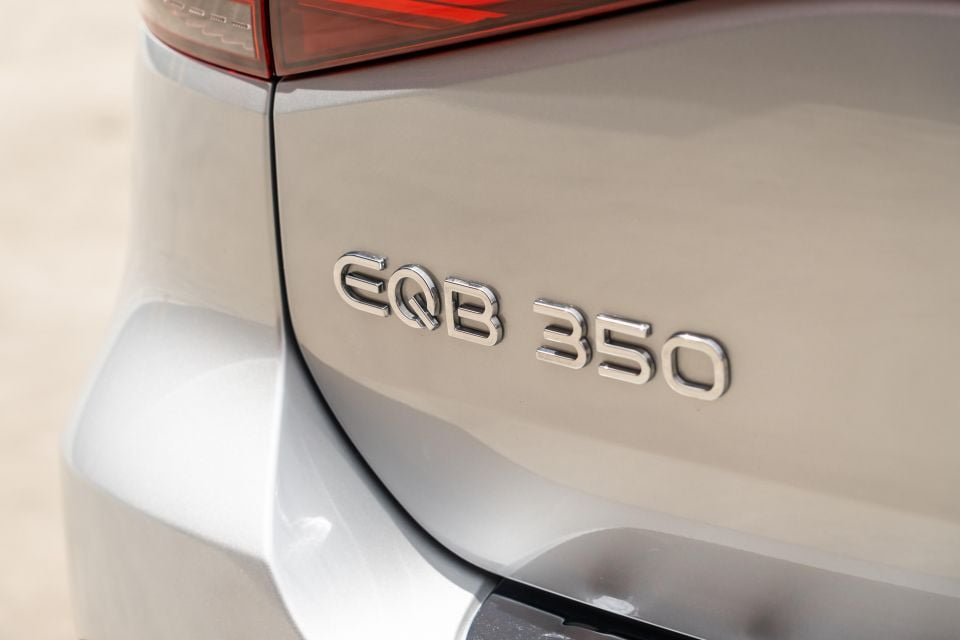
2023 Mercedes-Benz EQB pricing:
Prices exclude on-road costs
Buy your new car without the stress. It's fast, simple and completely free.

Great service from Travis and team, second time I have used this business would not hesitate to recommend them to anyone
Craig C.
Purchased a Ford Ranger in Sunshine Coast, QLD
CarExpert helped Craig save thousands on his Ford Ranger, now let us save you on your next new car.
Find a dealLike a GLB, and by extension like an A-Class, B-Class or GLA.
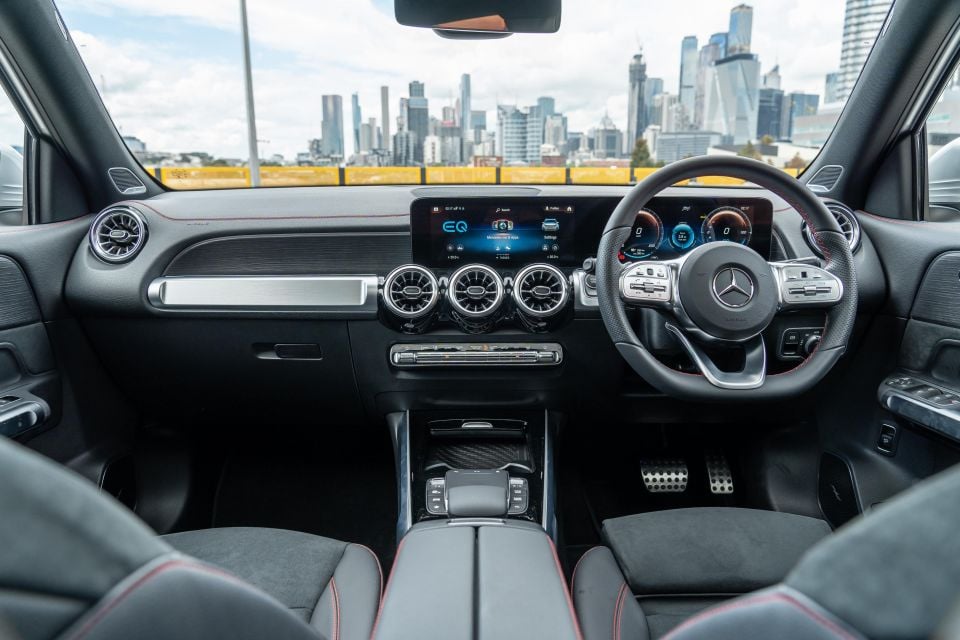
A taller, more upright version of the existing Mercedes-Benz cabin features here, headlined by dual 10.25-inch displays running the first iteration of the MBUX connected infotainment interface.
It’s a familiar system that’s attractive to look at and fairly easy to use, including features like satellite navigation with live traffic updates, as well as DAB digital radio in addition to wired Apple CarPlay and Android Auto.
There’s an option which brings augmented reality (AR) navigation as part of the MBUX Innovation Package ($2500), along with a head-up display. AR overlays a live camera feed with mapping prompts in your cluster or the infotainment display, which is both helpful and a great party trick.
MBUX 1.0 only offers wired smartphone mirroring as noted earlier, and with the placement of the USB-C port (and a tightly-packaged phone slot with charging pad), using Apple CarPlay and Android Auto risks your smartphone being flung around the cabin.
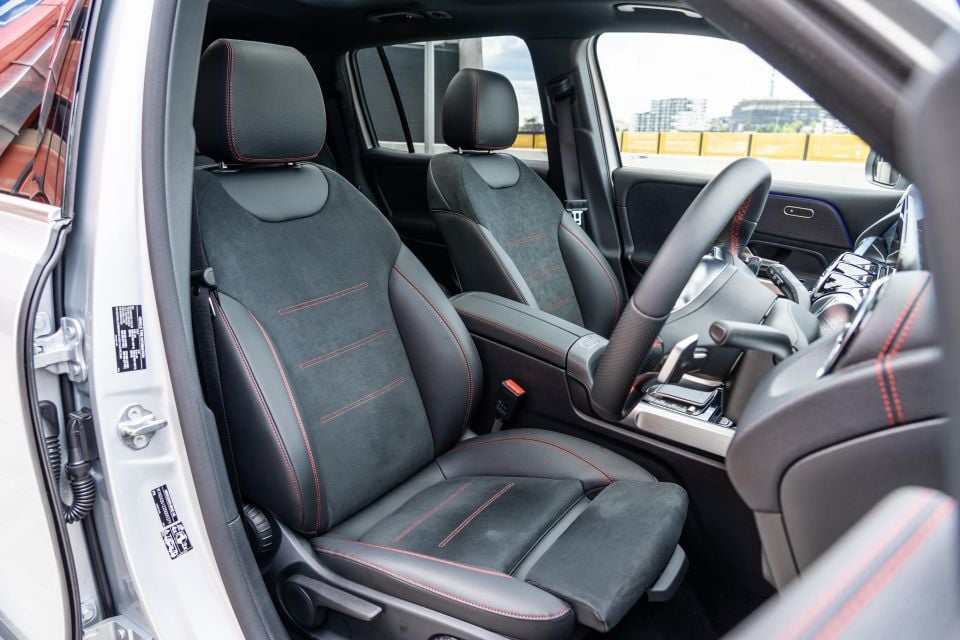

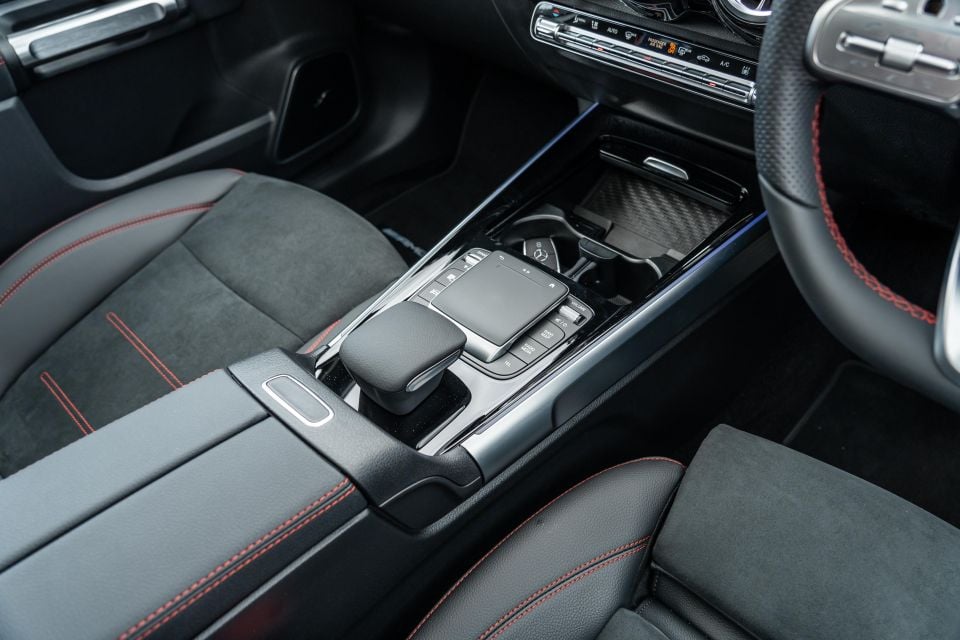
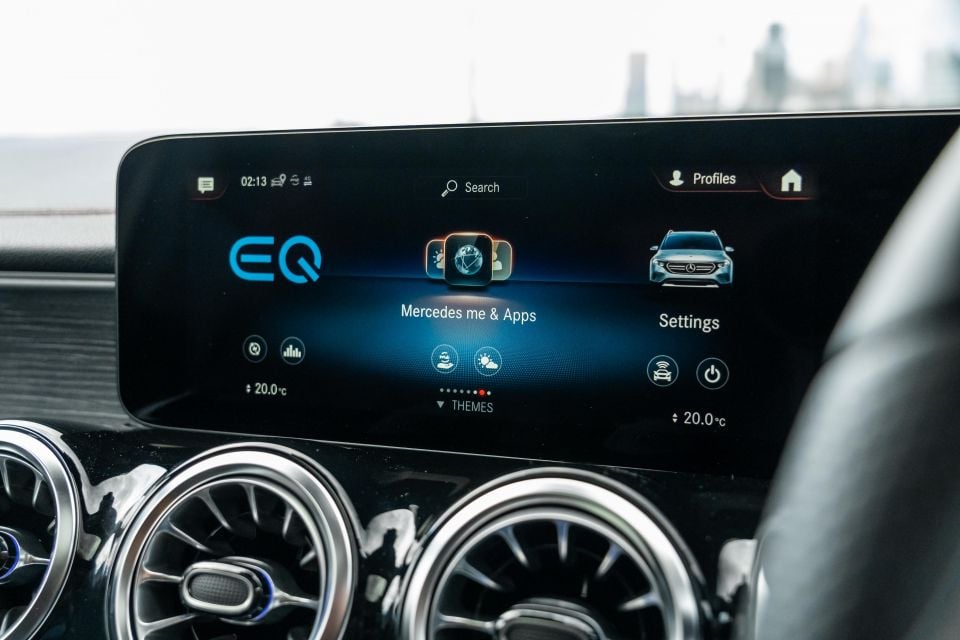
It’s a shame the EQB with its high-tech drivetrain doesn’t have the highest-tech infotainment from Mercedes, though an upcoming facelift in line with the related GLB is will bring MBUX 2.0 with wireless mirroring functionality.
You can control it via touch inputs or via the touchpad on the centre tunnel. There are also sliders on the steering wheel spokes that allow you to toggle both screens (infotainment on the left, driver’s display on the right), to keep you from having to take your hands off the wheel.
As we’ve noted in other reviews of MBUX 1.0-equipped models, the interface is clean and relatively intuitive while also fast to respond.
Tied to the infotainment in the same housing is the 10.25-inch digital driver’s display, which is as clear and configurable as the best of them. I enjoy the array of layouts and options, and the graphics are as good as in higher-end Benzes. Controlling them with the fiddly touch squares on the steering wheel, though, can take a little getting used to.
Speaking of the steering wheel, there’s plenty of (manual) adjustment in the steering column as well as the driver’s seat to get comfortable for longer journeys. The tall cabin and big windows also lend a bright and airy feel.
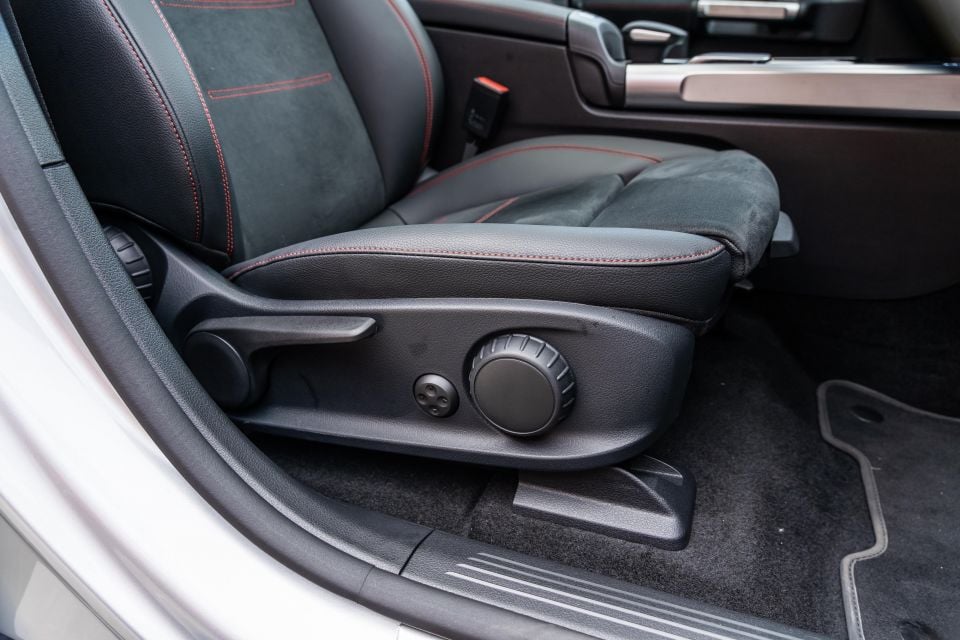
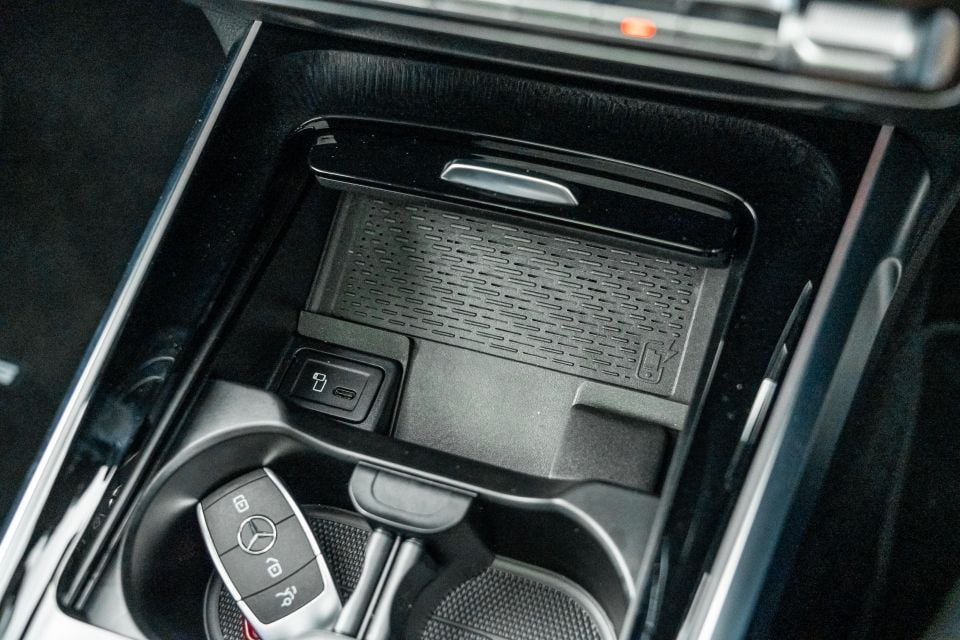
While Mercedes-Benz assured us at the launch (November 2022) new orders would feature power-adjustable front seats with heating, according to the current online brochure electric seats with memory are still an option, and there’s no mention of powered seats as standard equipment.
Mercedes-Benz Australia has since elected not to add electric seats and increase pricing, combining electric seats and memory for the front seats into a $1023 option. It’s questionable that you still have to option powered front seats in a vehicle asking for nearly $110,000.
Being based on the GLB and by extension the B-Class, space efficiency and optimisation is a key focus point in the GLB. Storage options in the front row include dual cupholders with a wireless smartphone charger, though as noted earlier the placement of the USB-C port for smartphone mirroring seems like an odd choice.
There’s also a deep, dual-lidded centre cubby with USB-C points, and it’s deep enough for large bottles or similarly-sized items. The EQB’s door pockets are deep, if a little skinny. Still, there’s heaps of room for your odds and ends.
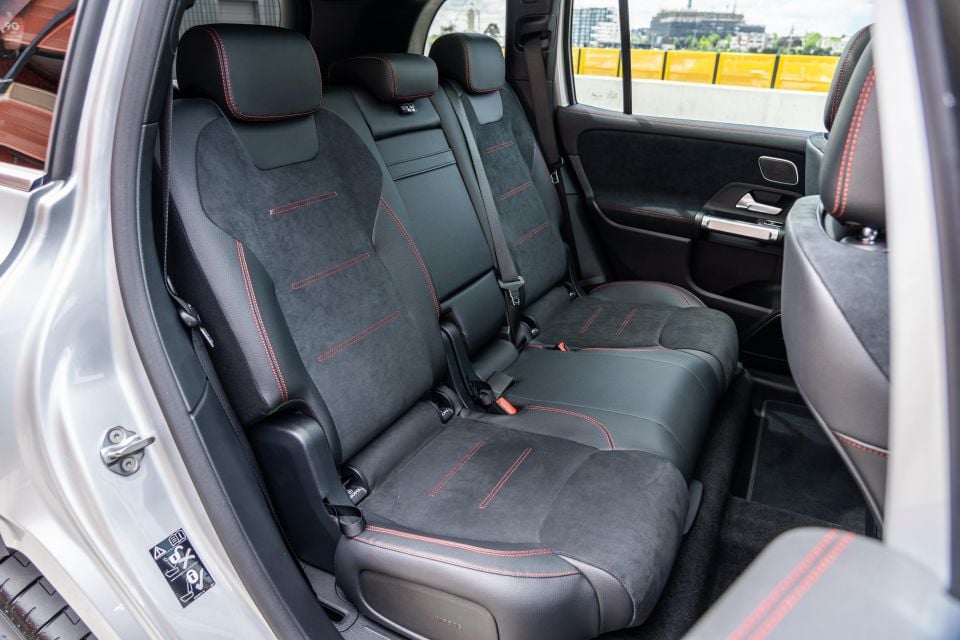

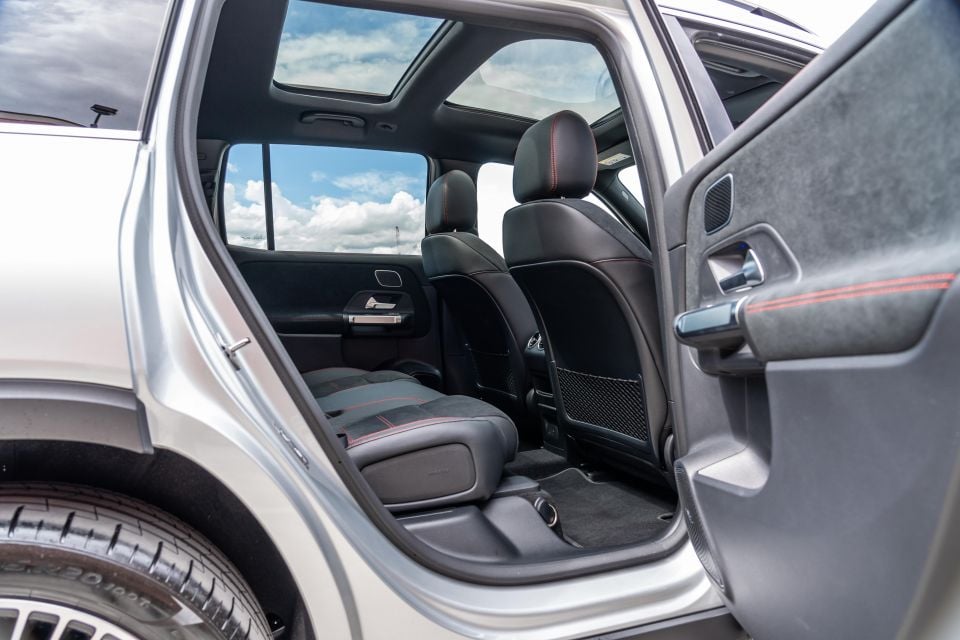
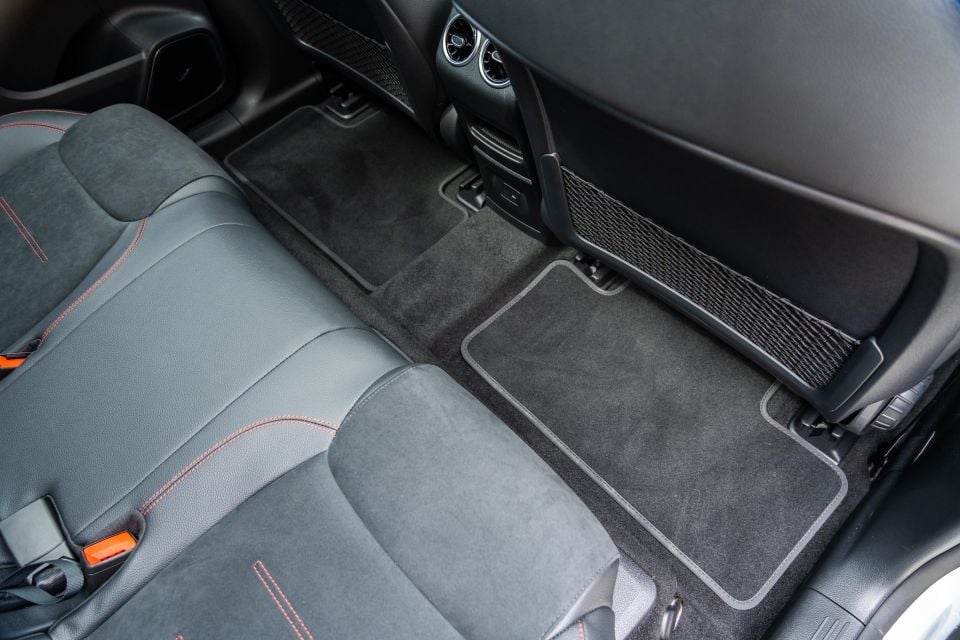
In the second row the EQB scores some points back, thanks to its segment-busting packaging.
Despite its compact car underpinnings, the EQB offers leg- and headroom on par with larger rivals. It’s like a Skoda Kodiaq or Volkswagen Tiguan Allspace inside.
The second row slides for and aft, and the backrests can be reclined. It’s a very configurable space.
Amenities include rear air vents, an additional USB-C charge port, netted map pockets behind the front seats, bottle holders in the door pockets, and a fold-down centre armrest with cupholders.
I can comfortably sit behind my preferred driving position at 6’1, and you’ll be able to squeeze three average-sized adults for short trips. Kids will love it back here, and the littlest ones will be catered for thanks to ISOFIX anchors and top-tether points.

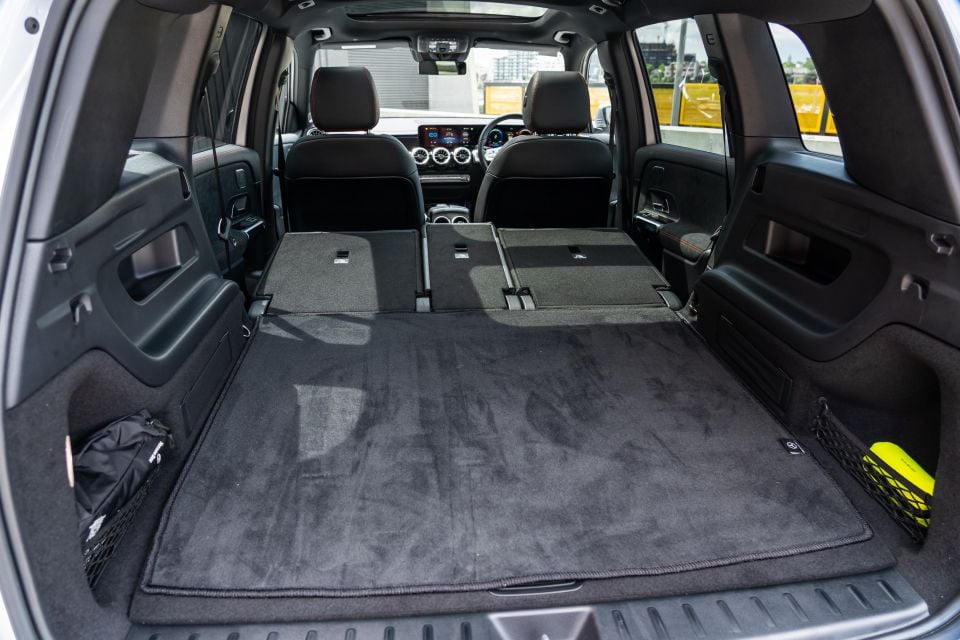
The EQB 350 quotes 495 litres with the second row in place, opening up to 1710 litres with the second row folded.
As a reference, the non-electric Volkswagen Tiguan Allspace quotes 700L/1775L in equivalent configurations.
No spare wheel features on the EQB spec sheet. Instead, there’s a tyre inflation kit.
The EQB 350 ups the ante over the 250 with dual-motor 4Matic all-wheel drive.
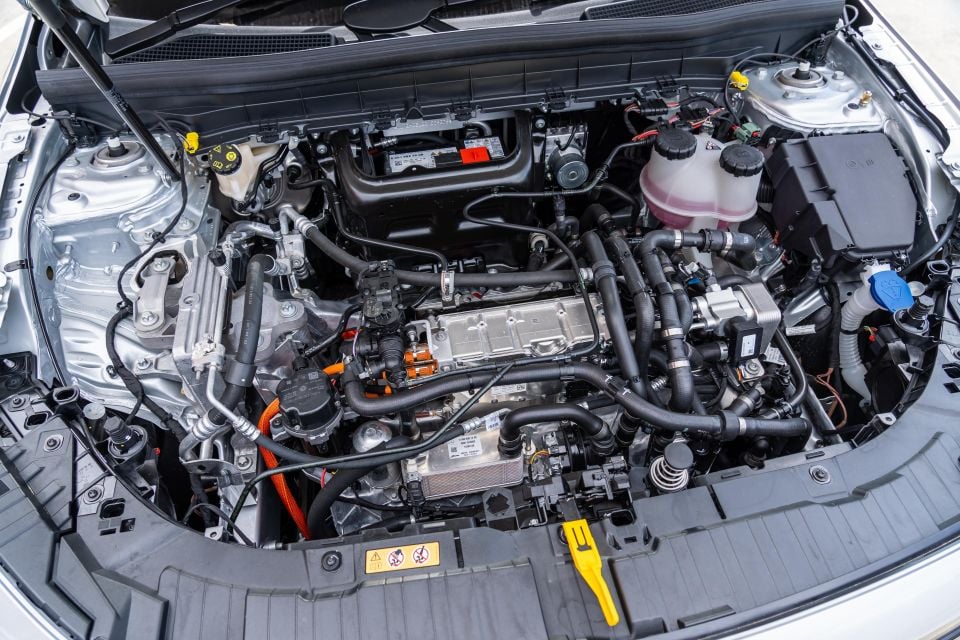
System outputs are rated at 215kW and 520Nm – up from the 250’s 140kW/385Nm figures – with Mercedes-Benz quoting a 0-100 time of 6.2 seconds.
The EQB 350 4Matic uses the same 66.5kWh lithium-ion battery pack as the EQB 250, but range drops to a claimed 445km based on a power consumption rate of 18.8kWh/100km according to ADR 81/02 figures, which are aligned with the older, more lenient NEDC test cycle.
For reference, Mercedes-Benz UK quotes 242-253mi (389-407km) for the EQB 350 4Matic on the stricter WLTP cycle, which is much more in line with the range quotes I was getting from the car during my time with the EQB 350.
The battery can be charged at up to 100kW using a DC fast charger, with 11kW possible via AC. That’s a little down on most rivals at this end of the market that can generally be replenished at rates of 150-200kW.
At its peak charge rate, the EQB can be replenished from 10 to 80 per cent in as little as 32 minutes.
If the EQB 250 is smooth and relaxed, the 350 noticeably punchier.

With nearly 150Nm more torque and 75kW more power, the EQB 350 feels every bit of that 3.0s quicker (to 100km/h) in real-world driving, perhaps more so when accelerating to urban speeds given the immediacy of response.
Stab it from the lights and it’ll pin you and your passengers into the back of your respective seats, with very immediate and linear acceleration that will get you to freeway speeds as quickly as most hot hatches.
I preferred the relaxed feel of the 250 which never felt like it was scrabbling for grip nor did it feel underpowered at Australia’s typical 100-110km/h speed limits, though I imagine on faster European freeways the difference between the two variants would be much more pronounced.
Like the 250 the EQB 350 is very quiet and refined at all speeds, with silent acceleration and a well-sorted ride despite the 20-inch salad spinner alloy wheels and their 235/45 low-profile tyres.

Part of the magic is down to standard adaptive damping tied to the MacPherson front and multi-link rear suspension system, which helps the EQB to iron out road imperfections in town and on the highway with minimal cabin disturbance.
Body control in the EQB is pretty decent despite its 2153kg kerb weight, and the light, fluid controls encourage you to drive this in a relaxed and restrained manner.
Insulation from the outside world is pretty good without being exemplary, keeping in mind the EQB’s boxy body isn’t as slippery through the air as the EQA, while the massive alloy wheels and low-profile tyres aren’t best suited to cancelling out road roar over coarser blacktop.
It does its best work in urban and city environments, getting up to 60 or 80km/h without breaking a sweat, even if in the 350 higher speeds are hardly a chore either.
There are regenerative braking settings from next to nothing to near one-pedal driving, as well as an adaptive mode that uses the forward-facing sensors to adjust regen levels on the fly. I tended to use the most aggressive setting just so my head could get around a consistent feel, as the adaptive setting can take a little getting used to.
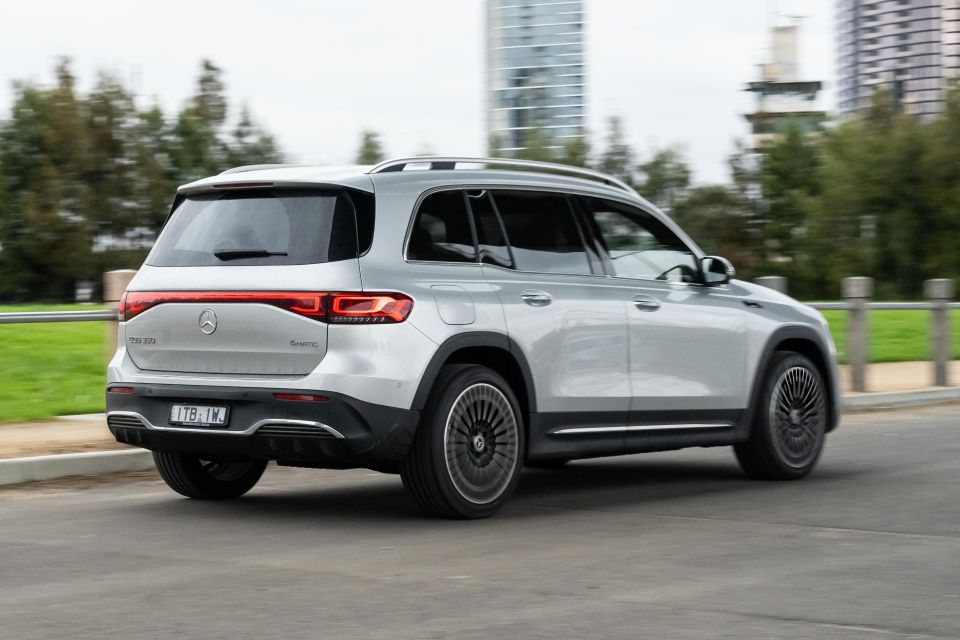
Where expert car reviews meet expert car buying – CarExpert gives you trusted advice, personalised service and real savings on your next new car.
Props to Mercedes for retaining the GLB’s vast glasshouse, as the EQB offers excellent outward visibility from all angles which makes this family bus quite easy to park and place in tight streets.
The EQB comes standard with the Driving Assistance Package, meaning it gets adaptive cruise control with stop/go, as well as Active Speed Limit Assist and Active Steering Assist for semi-autonomous highway driving.
Mercedes-Benz has long considered itself the benchmark for autonomy and safety tech in its vehicles, I had high hopes for its assistance suite. Thankfully, they all work really well.
Other highlights include blind-spot assist and exit warning functions, which are those good-to-have things that don’t pay themselves on until that time you need them (which is usually in a split-second).
All told, it’s a nice thing to drive. My main gripe is the range (or lack thereof) – I was seeing an indicated 19.9kWh/100km which would indicate a real-world driving range of about 334km, well off Benz’s 445km claim.
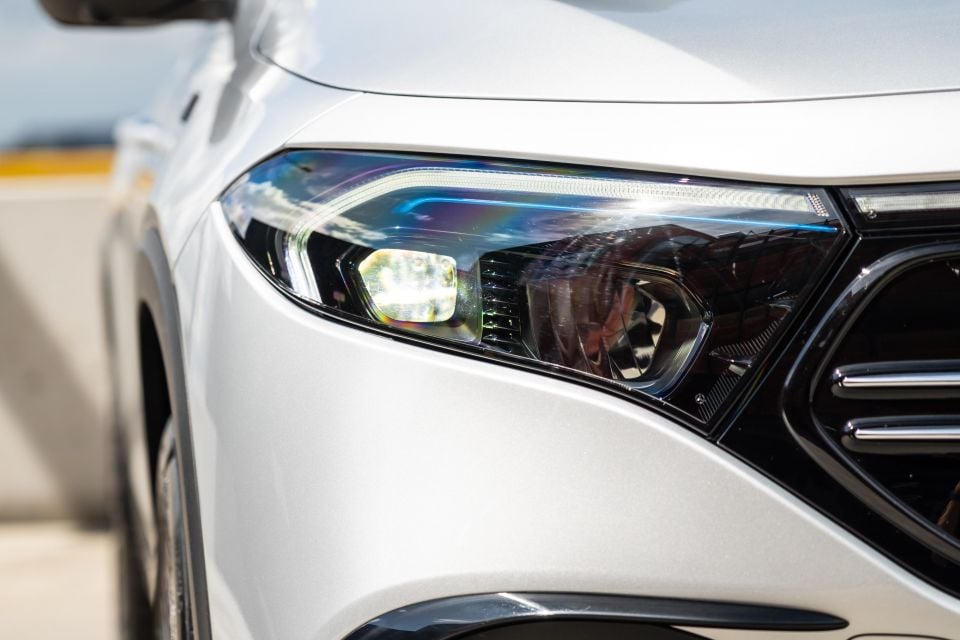

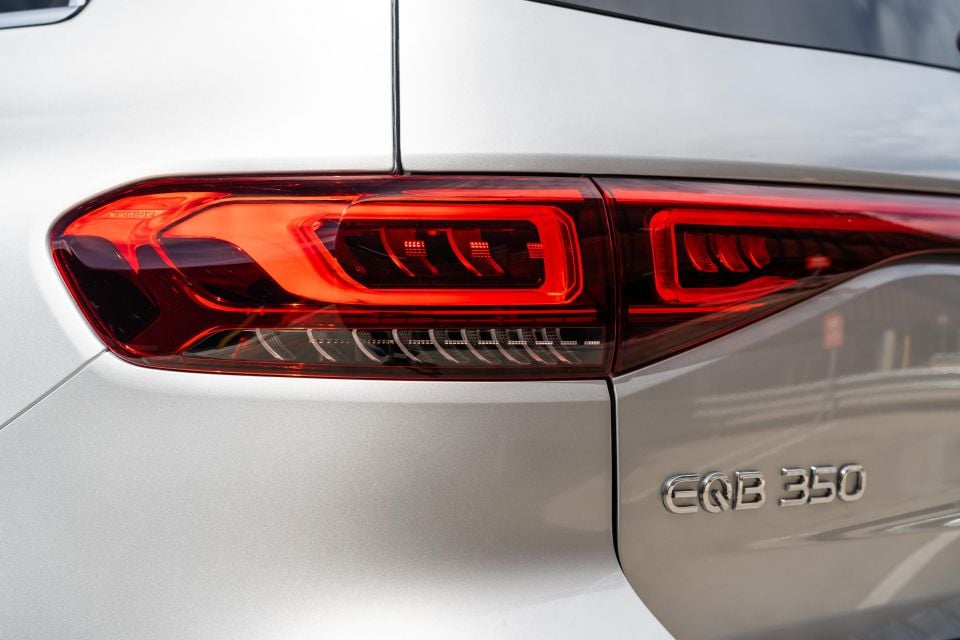

EQB 250 highlights:
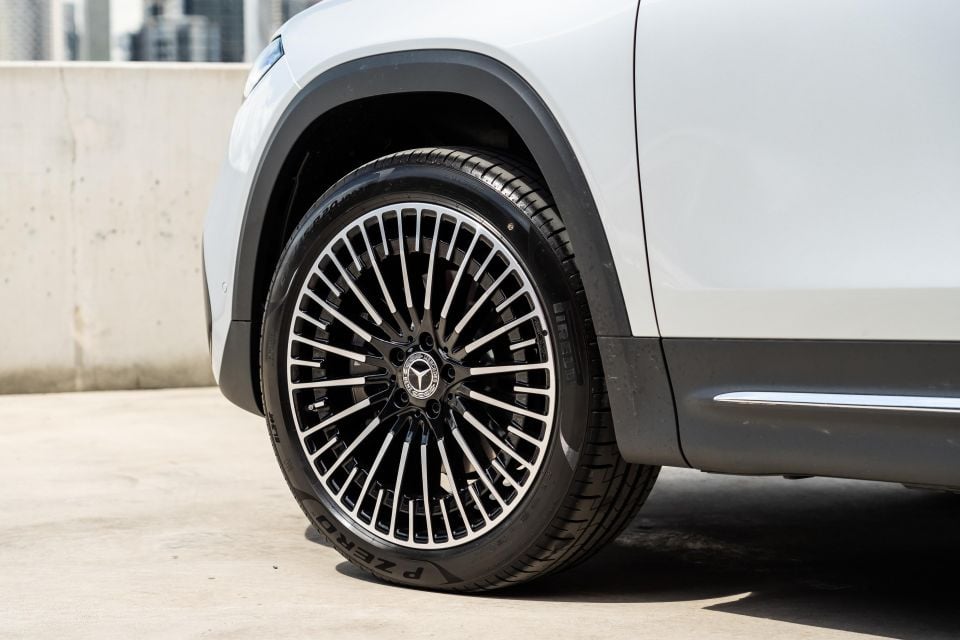

EQB 350 4Matic adds:
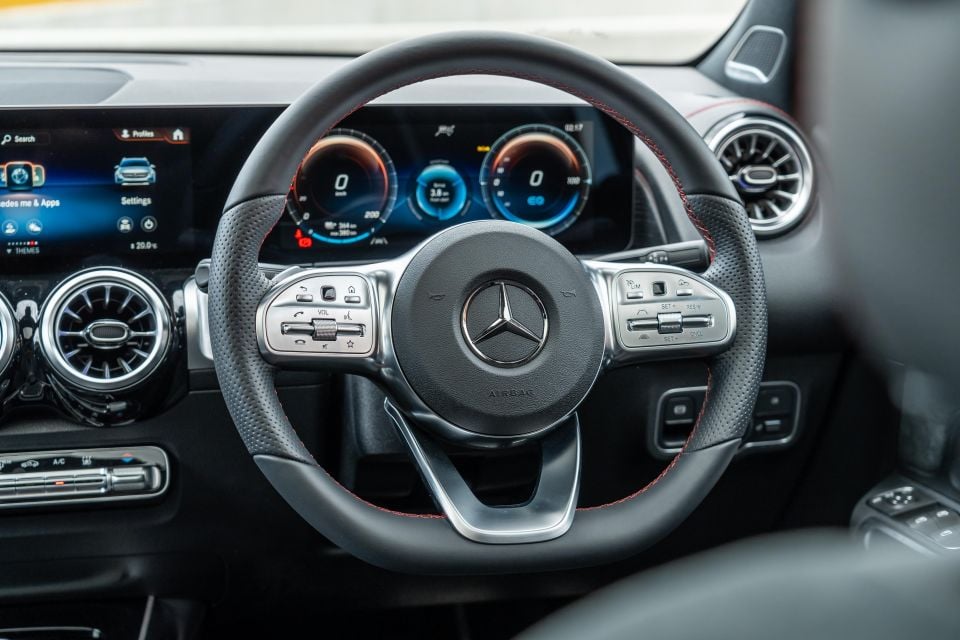
MBUX Innovation Package: $2500
Burmester surround sound: $1400
AMG leather package: $1700
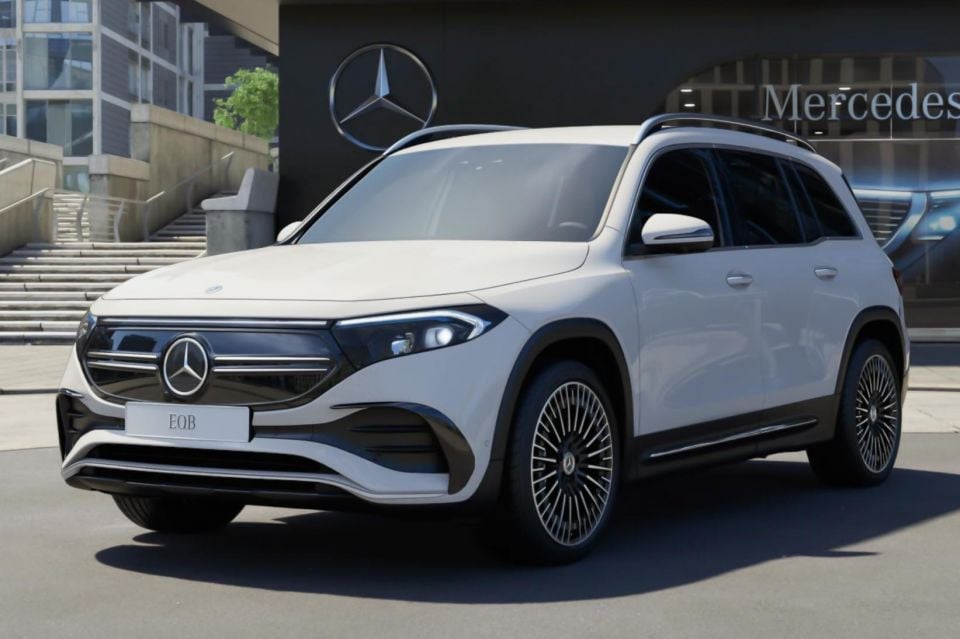


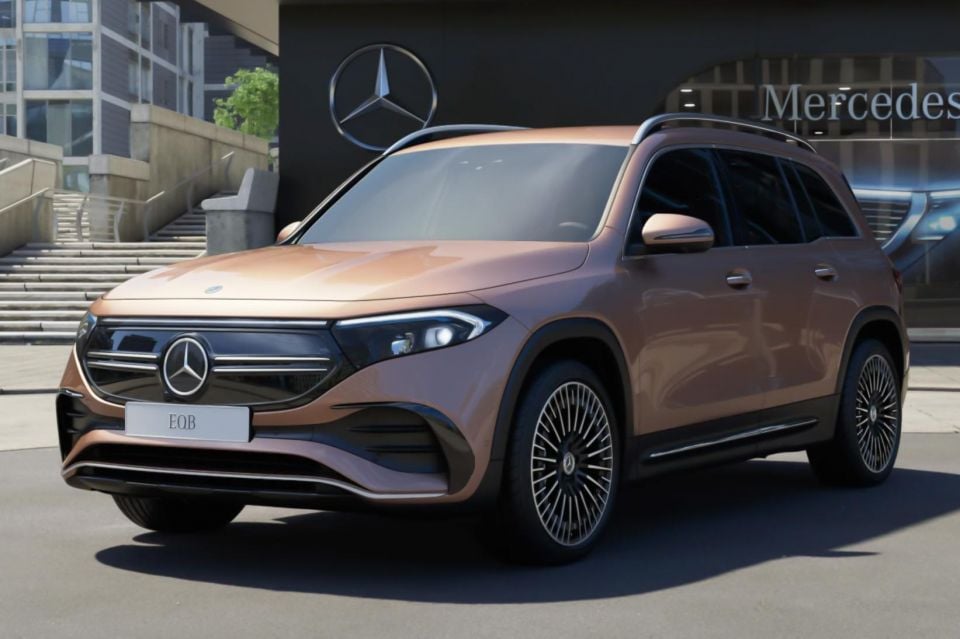

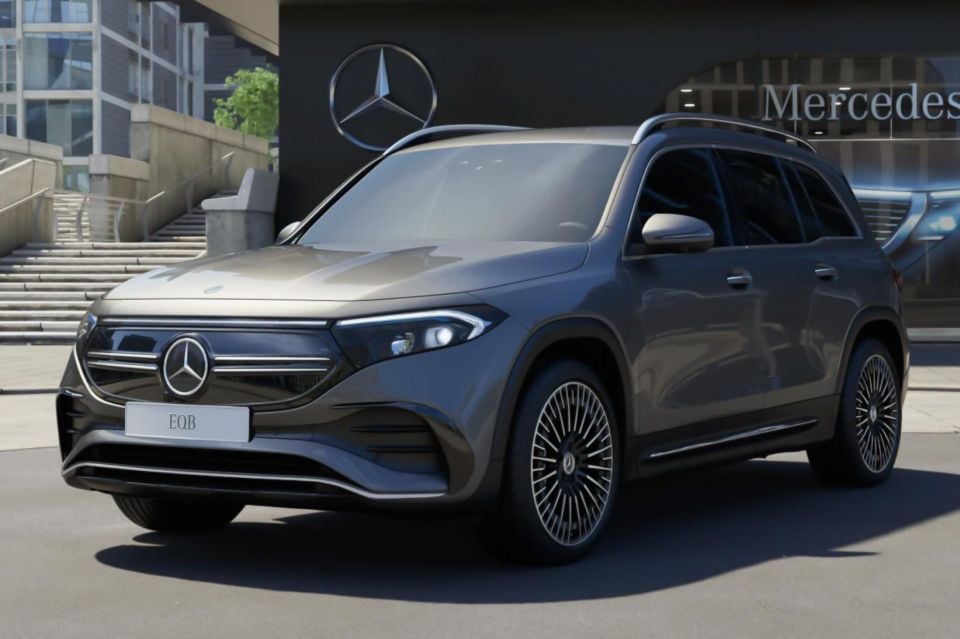
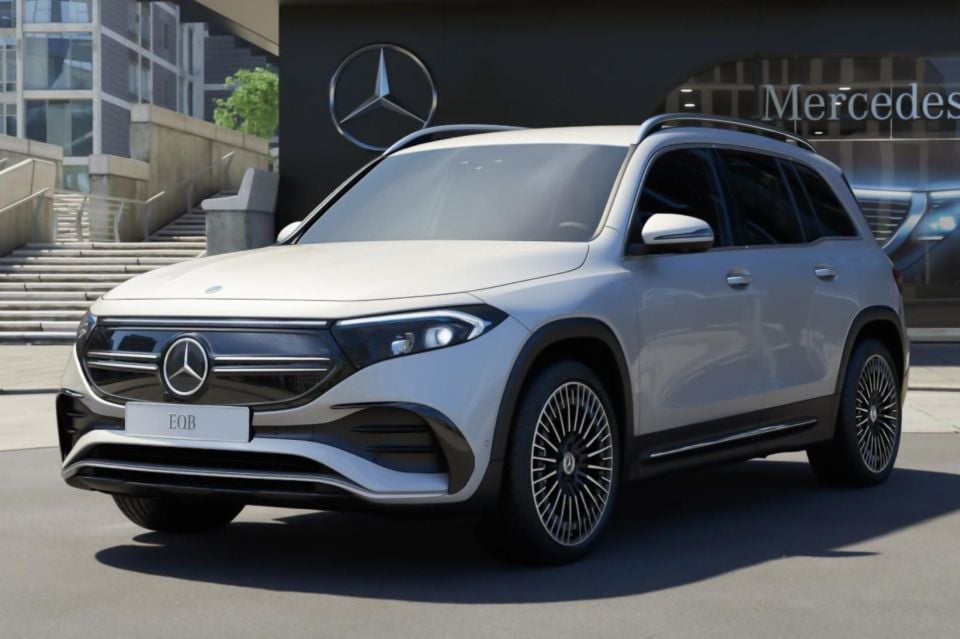
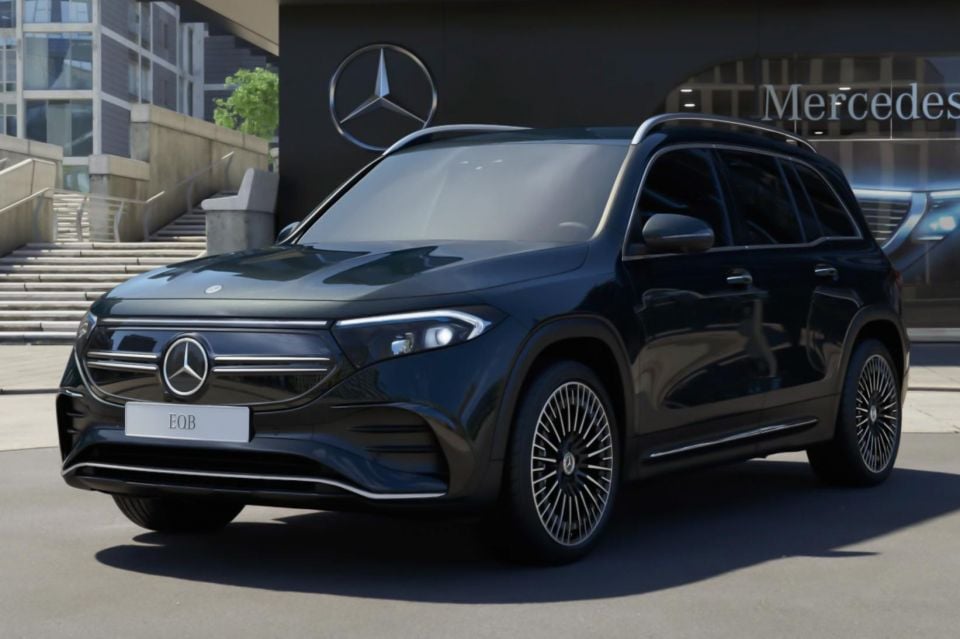
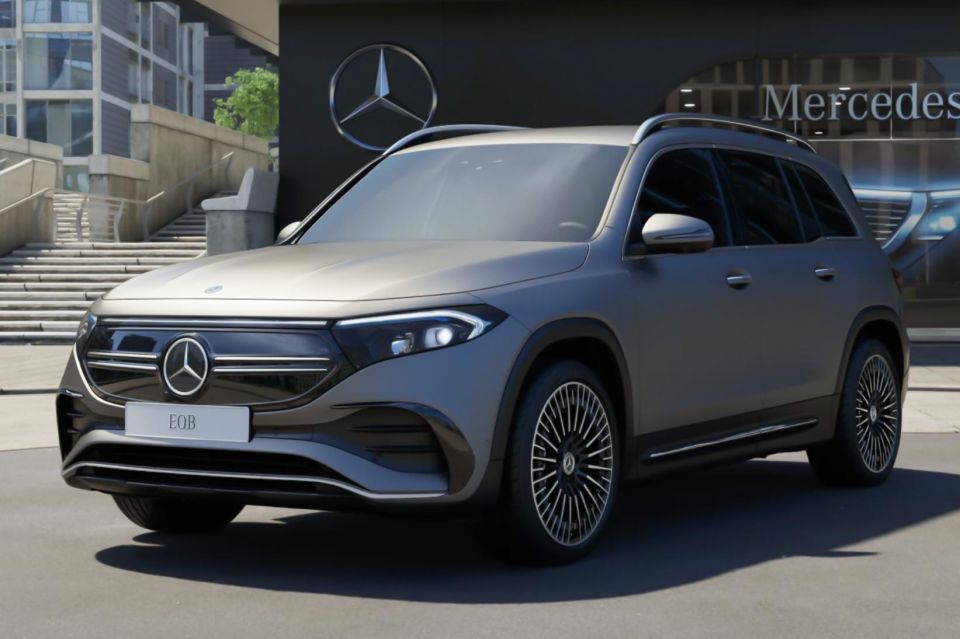
Solid: $NCO
Metallic: $1490
Matte: $3300
The EQB wears a five-star ANCAP safety rating based on 2019 tests, though this applies only to the EQB 250 – the EQB 350 4Matic is unrated.

It received an adult occupant protection score of 95 per cent, a child occupant protection score of 91 per cent, a vulnerable road user protection score of 78 per cent, and a safety assist score of 74 per cent.
Standard safety equipment includes:
Mercedes-Benz covers its range with a five-year, unlimited-kilometre warranty.

Servicing is required every 12 months or 25,000km, whichever comes first.
There are three-, four- and five-year service packages available, and for the EQB they’re priced at $1625, $2225 and $2650 respectively.
My indicated consumption during my time with the EQB 350 4Matic was 19.9kWh per 100km, which would indicate a driving range of a little over 330km on a full charge. While that range isn’t great, the efficiency figure isn’t bad for the size of vehicle, as well as the fact it’s within 1.0kWh/100km of what I got in the 250 (19.1kWh/100km).
In the EQB 250 I had shortly after this EQB 350, I tried a couple of charges at public DC fast chargers to test real-world performance. The EQB 250 would consistently peak at just under its 100kW capacity before tapering, with one session returning 49.27kWh in 40 minutes.
Mercedes-Benz throws in a one-year subscription to the Chargefox public charger network, including ultra-rapid stations – while beneficial, the 12-month subscription is pretty short compared to the three- or five-year passes given to buyers of other premium EVs.
For me, the EQB 350 seems redundant given you cannot get it in Australia with seven seats.
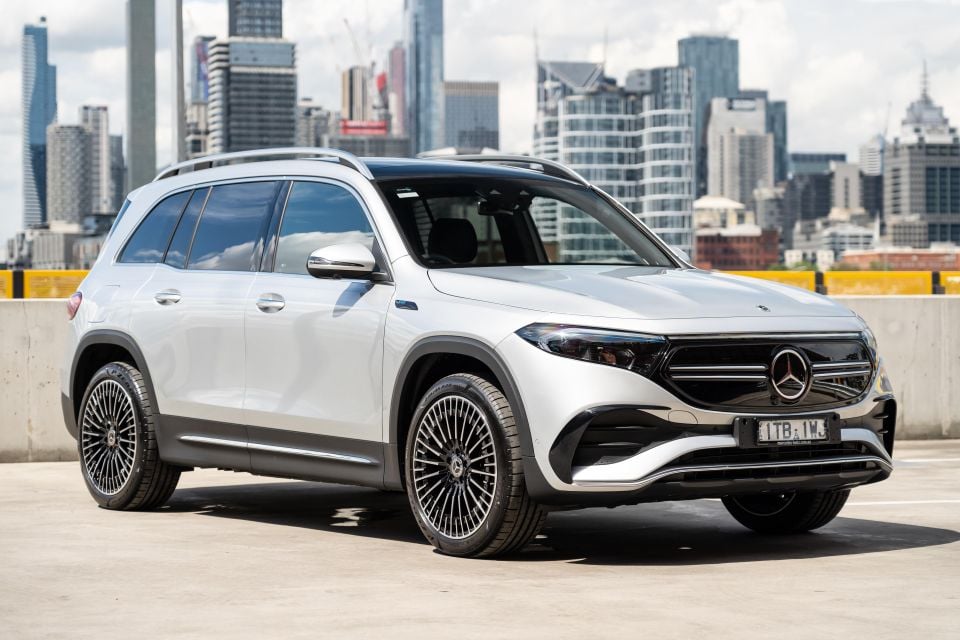
The whole point of getting the EQB (or GLB) over the EQA (or GLA) is the extra space and option for a third row, and unlike a lot of mid-size three-row SUVs the EQB’s rearmost seats are actually usable.
Well, for the EQB 350 4Matic it’s five-seat only – and it carries a near $20,000 premium over the single-motor EQB 250 which offers the three-row option. Dual-motor all-wheel drive is desirable for some, but the 350’s level of performance can’t match a lot of rival electric crossovers, and its driving range is likewise off the pace.
The current EQB is also running older infotainment software and features compared to some of its relatives – i.e. the A-Class has already been updated the MBUX 2.0, with the GLA and GLB to follow before year’s end.
For me, the only EQB that really makes sense is the 250 optioned with seven seats, as there’s currently no other SUV on the market that can offer you an electric drivetrain with seven seats – at least until around October when Kia releases the even larger and more spacious EV9.
As for the EQB 350, I’d put my money towards the more luxurious and capable BMW iX3 instead – even if it lacks all-wheel drive. I’m sure many will see the Model Y Performance as the obvious choice, too.
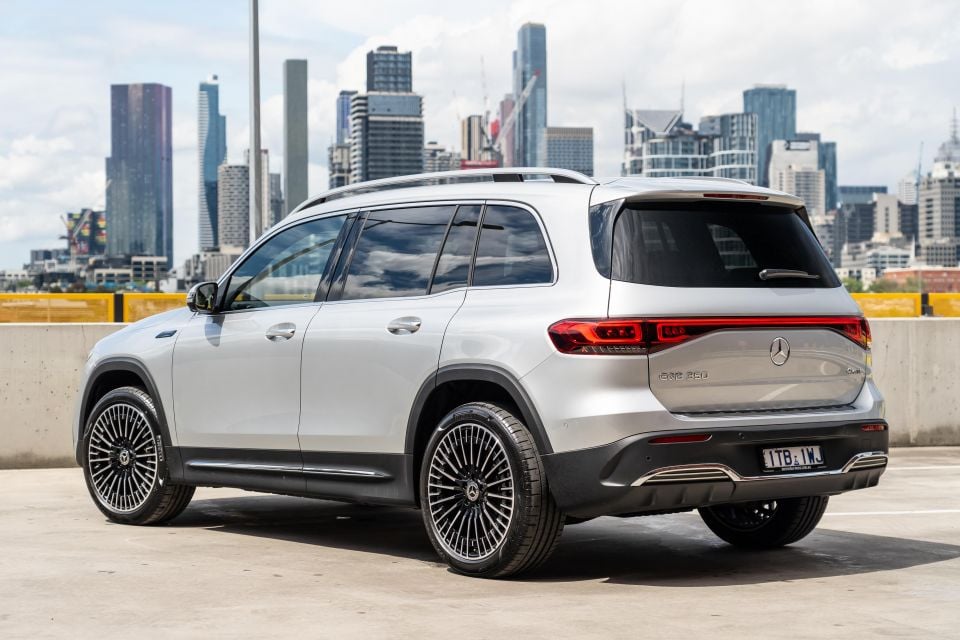
Click the images for the full gallery
Where expert car reviews meet expert car buying – CarExpert gives you trusted advice, personalised service and real savings on your next new car.
James Wong is an automotive journalist and former PR consultant, recognised among Australia’s most prolific motoring writers.


Damion Smy
7 Hours Ago


Damion Smy
9 Hours Ago


Damion Smy
10 Hours Ago


Damion Smy
12 Hours Ago


Damion Smy
13 Hours Ago


Damion Smy
15 Hours Ago